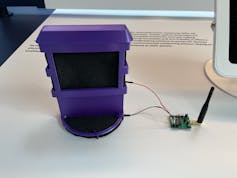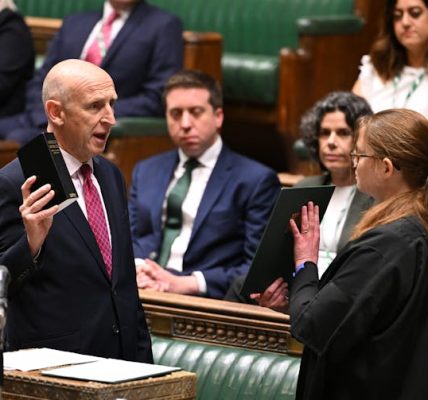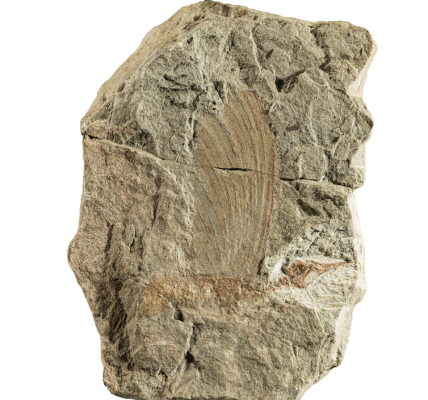My artwork, A Virtuous Woman, has become the centre of a protest – it shows how our polarised society can affect art
My project A Virtuous Woman is both an artwork and a piece of ongoing research into the role of participatory artwork in heritage sites. As such, the artwork was always intended to be dynamic, responding to the ways in which people wanted to take part.
The artwork was inspired by the embroideries of the ancient noble women commissioned by one of the most notable women in Elizabethan court and society, Bess of Hardwick, four of which are on display at the National Trust property, Hardwick Hall. The new work was intended to be a reimagining of the missing fifth embroidery, made from recycled fabrics donated by the National Trust staff and volunteers.
Visitors to the hall could take part in sewing, cutting and adding their own expressions through embroidery. But after two participants added the name of author J.K. Rowling to the piece and another embroidered a line of stitches through both instances, things became complicated.
A protest was staged at Hardwick Hall and the artwork became the centre of a media storm. I have been subject to accusations and abuse online for displaying the work complete with these conflicting pieces of participation and the National Trust have received a barrage of complaints. So where does this leave participatory arts, the artists who create and facilitate them and the sites which commission and host them?
Looking for something good? Cut through the noise with a carefully curated selection of the latest releases, live events and exhibitions, straight to your inbox every fortnight, on Fridays. Sign up here.
Participatory arts have to consider not only the freedom of expression of the artist, but of every person who participates. Both the National Trust and I had to attempt to balance the expressions of participants in a political polarised climate, while witnessing a media fallout when groups and individuals disagree with the choices made.
Participation with the artwork took place between April and November 2024. Throughout this time, the work prompted discussion and debate around the subject of virtues and the women that visitors felt upheld these values.
Thousands of people added their embroideries. In total 186 words of virtue or value, and 804 names were added to the piece. Some were embroidered by more than one person (a few stitches, or a letter each), some participants embroidered more than one contribution, and many virtues and names were repeated multiple times.
The Hardwick Hall team and I had previously agreed that no names would be censored or removed from the work, and that participants would not be allowed to unpick each other’s embroidery. However, while not encouraged, participants would be allowed to interact with and adapt the embroidery of other participants.
In August 2024, a complaint was raised after two people added Rowling’s name to the piece. The author has sparked controversy in the last few years as a result of her “gender critical” views, which many see as transphobic (a claim which Rowling denies), while others see her as a figurehead for women’s rights. A participant then embroidered a line of stitches through both instances of the name on two separate panels (in the colours of the trans pride flag), while leaving the name clearly visible.
We now needed to consider whether staff, volunteers and visitors might feel offended, unsafe or unwelcome when encountering the recognition of a person seen by some as harmful. We also needed to think about the dismissal of someone admired by others for their cultural influence and beliefs.
At the request of the National Trust, the project was “paused” for a month while advice was taken on the most appropriate way forward. Staff were prepared through workshops run by the National Trust team on how to deal with potentially difficult interactions with participants.
I was asked by the National Trust team if I was willing to remove any embroidered names from the work, including repetitions. I said I was not, as participants had taken part in good faith and were expecting to see their contribution in the completed work.
The Hardwick Hall team and I agreed that all names would remain, and all subsequent names added would not be subject to censorship. We agreed that the lines stitched through Rowling’s name would also remain. I felt that removing them would remove an act of protest – a valid act of participation – and that leaving it on display would demonstrate the difficulties and friction involved in creative expression and participation in our often-polarised society.
Many participants saw Rowling’s crossed out name while embroidery was still taking place, and some responded by adding her name again. Participants discussed cancel culture, polarised views and the complexity of the people they admire.
When the artwork was complete, Rowling’s name appeared seven times – twice with a line stitched through, five times unaltered. The completed artwork was placed on display at Hardwick Hall in January this year.
On May 24, the Women’s Rights Network (WRN) posted a thread on X detailing a visitor complaint regarding the crossing out of Rowling’s name. They called for the National Trust to add a statement to the artwork, explaining why the crossing out remains on display. Members of the WRN subsequently carried out a protest on site and created a short film explaining their position.
On May 31, two visitors to Hardwick Hall cut away the line of stitches and posted images and video of themselves doing so on X.
The subsequent mainstream media coverage, blog posts and widespread social media attention resulted in threats of further activism.
The National Trust initially covered the work to protect it, but then removed it from display on June 4, as there was now also a risk to other artworks and collection items at Hardwick Hall, and to the staff and volunteers on site.
The National Trust released a statement on X, which appeared to do little to answer questions being raised. There are now growing calls for commentary from me, as the artist responsible for the work, to explain what has happened, how decisions were made and where I stand both on the actions taken and the wider gender debate this speaks to.
Limitations in creative expression
I believe that the arts are in a unique position to tackle difficult subjects, and participatory arts can provide an opportunity for more voices to be heard. But with this approach comes the inevitable balancing act of where freedom of expression ends and causing harm begins.
Consideration must be given to intention versus impact. Making these editorial and ethical choices creates a changing power dynamic. The participants have been invited to take part and do so in a way that is meaningful to them in what they believe to be the overall context of the work.
In participatory arts, the artist is part author, part facilitator of the expressions of others. The commissioning body or hosting site then holds the ultimate control, in being able to choose whether to display the work created.
My part in the decision to allow the stitching through of Rowling’s name essentially comes from a shared belief in singer Nina Simone’s view that “an artist’s duty … is to reflect the times”.
In my opinion, the acts of protest and activism in the crossing out of the name and the removal of that crossing out epitomise the lack of tolerance for other people’s views and beliefs that is becoming prevalent in our increasingly polarised society. As such, I think it is entirely appropriate to display these actions in the artwork. This polarisation and intolerance has been compounded in the subsequent outpouring of online vitriol and demands for what this work should and should not represent.
Both acts of activism changed the artwork, and disregarded the previous participant’s contribution. The difference is that the crossing out took place while participation was invited and expected – the removal of that crossing out was not. As the artist responsible for the artwork I have faced increasing demands not just to clarify the events leading to this point, but also to openly share my views on the actions taken by all parties. However, an artist sharing their opinion is not simple, or necessarily safe.
In its recent report, Freedom of Expression in the Arts (a five-year project aiming to tackle the culture of fear and intimidation some artists face for expressing their views) found that artists are increasingly afraid to express themselves on dangerous topics for fear of backlash from the public and cancellation of work opportunities by commissioning bodies.
My own experience has shown that social media is neither the place for nuanced, balanced, nor reasonable debate. I have been accused of transphobia for allowing the inclusion of Rowling’s name in the first place, and called (among other things) a “gender traitor” for allowing her name to be crossed out. But when a commissioning body or host site cancels a work which speaks to these debates, how else are artists able to speak out?
In a comment sent to The Conversation, a National Trust spokesperson said: “A Virtuous Woman is formed of people’s views from a variety of age groups, life experiences and beliefs … We understand that everyone may not agree on all the names included, but they are the choices of individual participants. Everyone is welcome at the National Trust, and the artwork reflects the diversity of the community and individuals we serve. Our approach is to make space for a variety of creative and personal responses to the collections and to encourage conversation.”
At the time of writing, I have been told that the redisplay of a projection of the artwork and explanatory panels is under review and is unlikely to take place until September 2025. Participatory arts hold up a mirror first to those who take part, and then again in the reception and judgement of subsequent viewers. The difficulty comes when we don’t like what it reflects.
Layla Khoo receives funding from the Frank Parkinson Scholarship for her PhD research.



